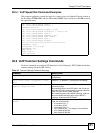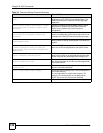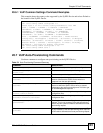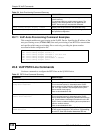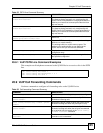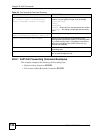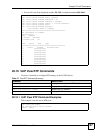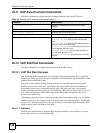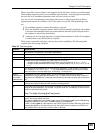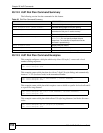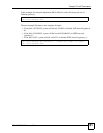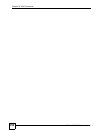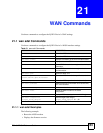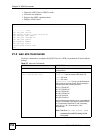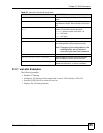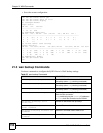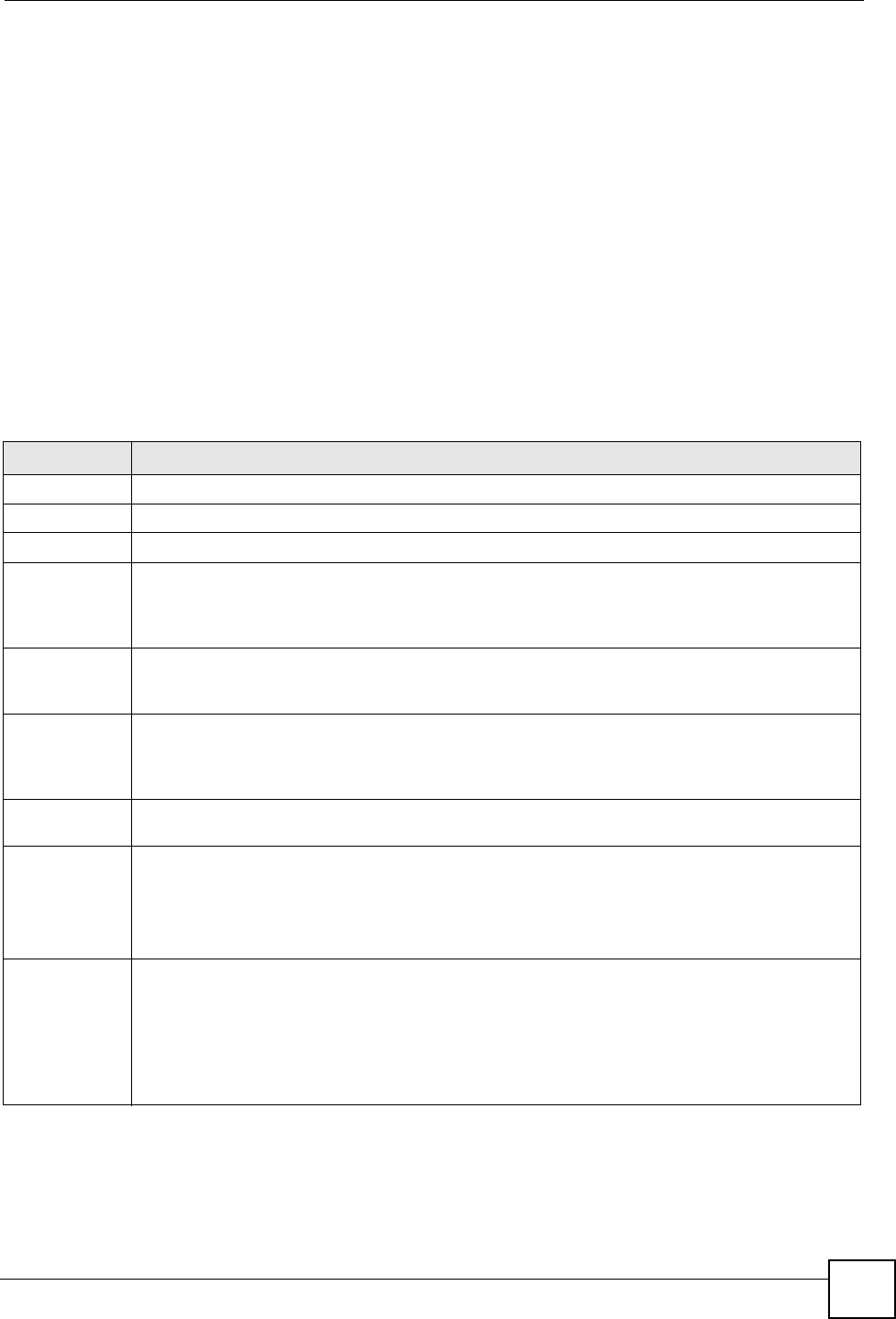
Chapter 20 VoIP Commands
DSL & IAD CLI Reference Guide
149
When a user dials a series of digits, each sequence in the dial plan is tested as a possible match.
The matching sequences form a set of candidate digit sequences. As more digits are entered by
the user, the set of candidates diminishes until only one or none are valid.
Any one of a set of terminating events triggers the device to either accept the user-dialed
sequence and transmit it to initiate a call, or else reject it as invalid. The terminating events
are:
1 No candidate sequences remain: the number is rejected.
2 Only one candidate sequence remains, and it has been matched completely: the number
is accepted and transmitted after any transformations indicated by the dial plan, unless
the sequence is rejected by the dial plan.
3 A timeout occurs: the digit sequence is accepted and transmitted as dialed if incomplete,
or transformed as per the dial plan if complete.
White space is ignored in dial plans, and may be used for readability. The following table
contains rules for creating dial plans:
Table 59 Dial Rule Syntax
SYNTAX DESCRIPTION
( ) The collection of sequences is enclosed in parentheses.
| Used to separate multiple dial plan rules.
x The letter is used as a wildcard, matching any one numeric digit ('0' - '9').
[ ] A subset of keys within brackets. (e.g. [389] means '3' or '8' or '9'.)
- Numeric ranges are allowed within the brackets. (e.g. [2-9] means '2' or '3' or …. or '9'.)
- Ranges can be combined with other keys. (e.g. [235-8*] means '2' or '3' or '5' or '6' or '7' or '8'
or '*'.)
. Any element can be repeated zero or more times by appending '.' to the element. For example,
"01." matches "0","01", "011", "0111", …… etc.) Note that the command can be used only at the
end of a dial plan rule and all digits (0-9,*,#) following '.' will be ignored.
<dialed-
subsequence:
transmitted-
subsequence>
A subsequence of keys (possible empty) can be automatically replaced with a different
subsequence using an angle bracket notation. (e.g. "<8:1650>xxxxxxx" would match "85551212"
and transmit to "16505551212".) Note that the command can be used only at the start of a dial plan
rule.
! A sequence can be rejected by placing '!' at the end of the sequence. For example, "1900xxxxxxx!"
automatically rejects all 900 area code numbers from being dialed.)
@ A termination character. When the termination character is at the end of the dial sequence, the dial
string will be sent immediately. For example, "911@" will send "911" immediately, in other words no
delay for any timeout value occurs.
Note: The digits following @ will be ignored.
=gwX= This syntax means "if you match this dial plan listed, dial out this gateway". gw0 is special and
means "dial out the default VoIP port".
The setting of gw0 means VoIP gateway, gw1 means PSTN gateway, gw2 means ISDN gateway,
and gw3 is reserved for future use. The default setting is VoIP gateway.
If there is a setting gw2 for a dial sequence, the ZyXEL Device will check if ISDN line exists when
matching this sequence. If it does not exist, then the ZyXEL Device will dial out via PSTN line. If
both ISDN/PSTN line do not exist, the dial number is blocked.



